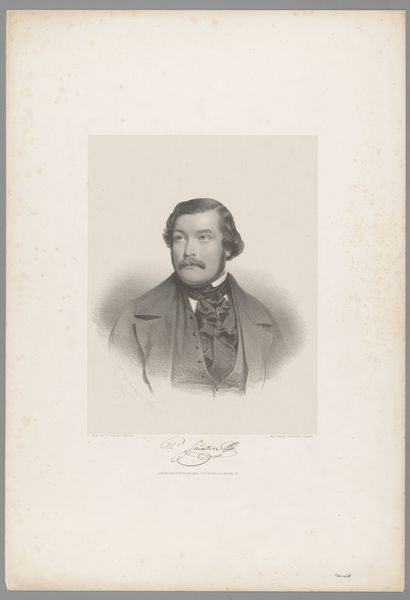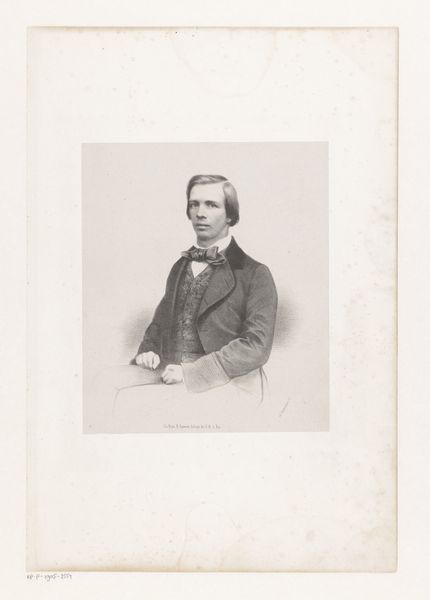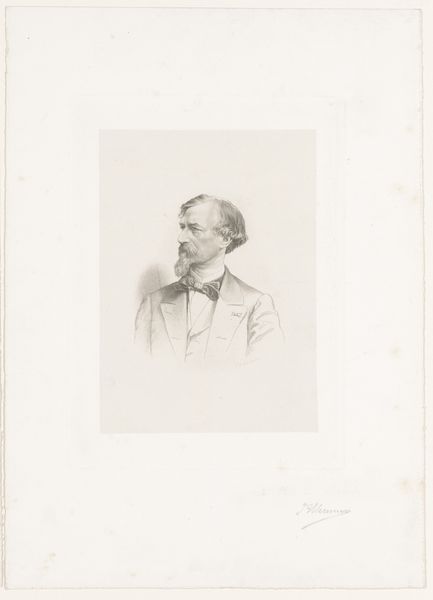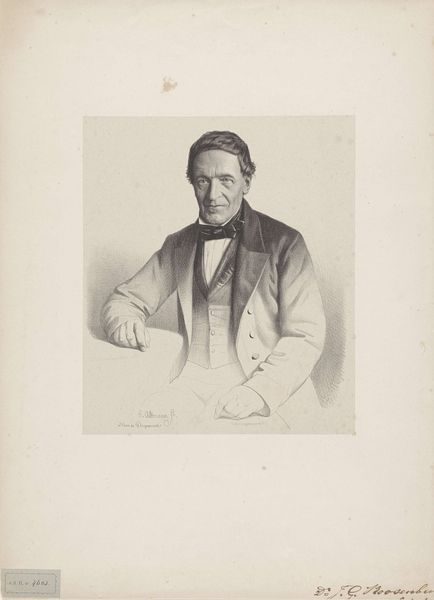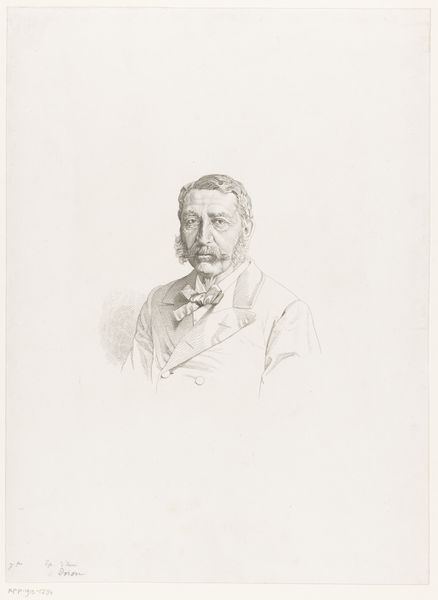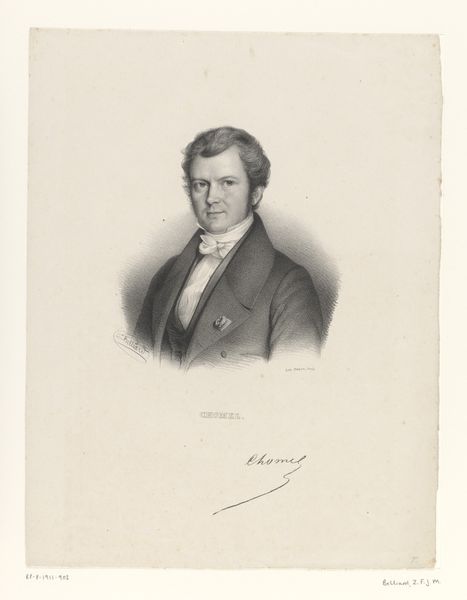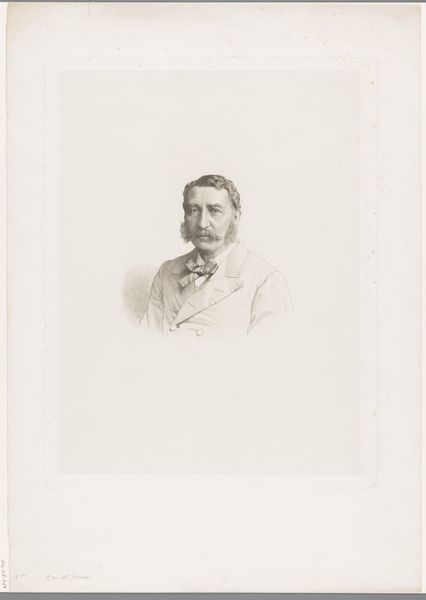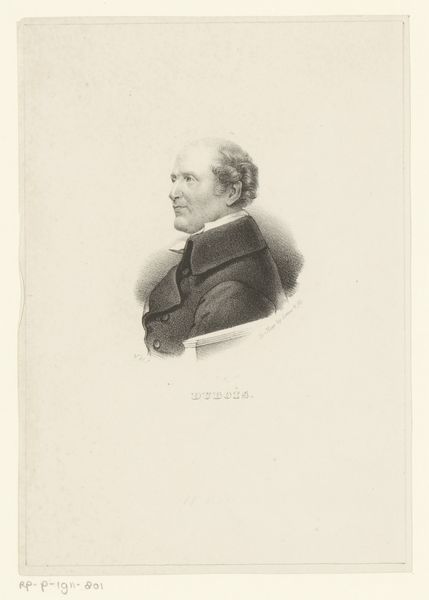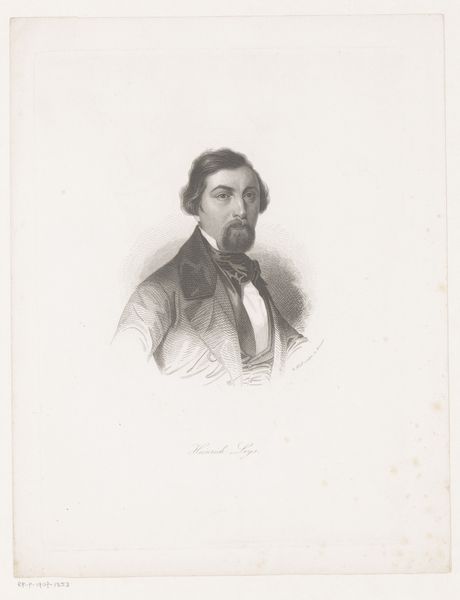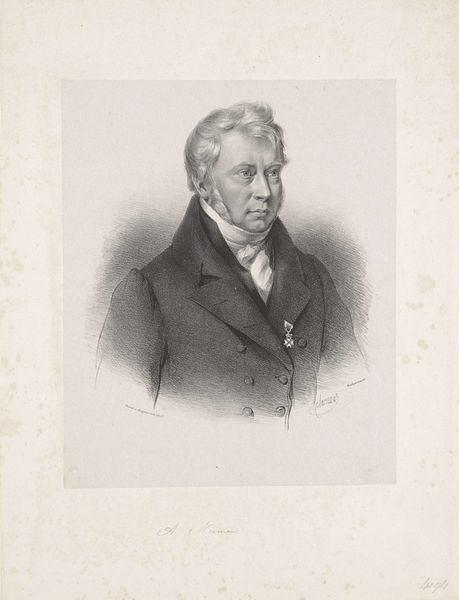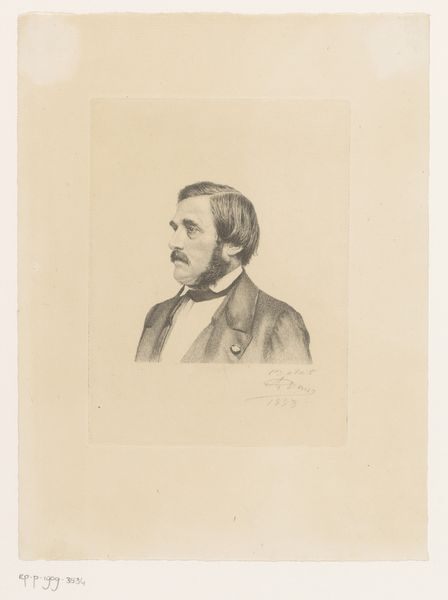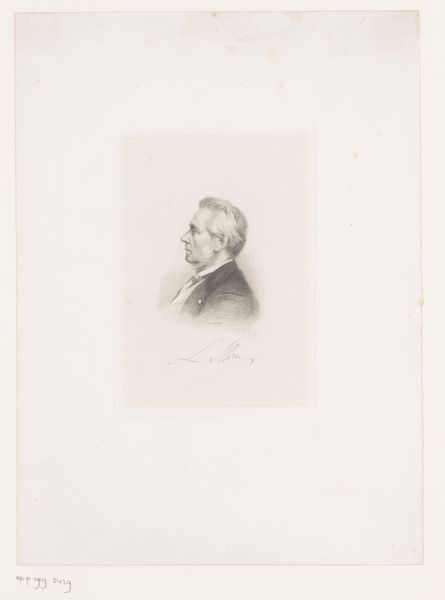
drawing, graphite
#
portrait
#
drawing
#
charcoal drawing
#
pencil drawing
#
graphite
#
portrait drawing
#
graphite
#
realism
Dimensions: height 505 mm, width 366 mm
Copyright: Rijks Museum: Open Domain
Curator: Here we have "Portret van een onbekende man," or "Portrait of an Unknown Man," rendered in graphite by Sybrand Altmann in 1859. Editor: He looks rather severe, doesn't he? A bit closed off, I would say, though expertly rendered, certainly. The texture achieved with just graphite is striking. Curator: Graphite was a readily available and relatively inexpensive material at that time, making portraiture accessible beyond the wealthy elite. We see it utilized here for a depiction that begs questions about class and representation in the mid-19th century. Altmann's process democratized the medium, but what stories does this unknown man carry, and how might his social standing have influenced the creation and reception of his image? Editor: That's an interesting point. Considering the broader context of 1859, you've got a period ripe with social upheaval, emerging industrialization… the man's stiff collar and tie, his slightly disheveled hair… are we looking at a member of the burgeoning middle class, perhaps? Someone striving for respectability, captured through a rapidly evolving means of production? The materiality definitely informs our understanding. Curator: Precisely. The very nature of graphite, its malleability and reproducibility through drawings and prints, allowed for broader distribution of images. We must also consider the labor involved – the availability of the materials, the artist's skill in manipulating them to create such detail... these all speak to economic and social frameworks in play. I would assume the support is standard paper available at the time in Amsterdam? That would also contextualize value... Editor: Absolutely, the subtle gradations of tone achieved on paper like that. He’s quite life-like... but beyond technique, I'm drawn to the power dynamics inherent in portraiture itself. Who has the right to be represented, to have their image preserved? The ‘unknown man’ becomes a symbol for so many overlooked stories, isn’t it? The intersection of labor, class, and artistic representation is deeply compelling here. Curator: Indeed. Considering that accessibility to material and production methods leads me to reassess how artistry during that time helped broaden accessibility for representation. Editor: Exactly. It’s a simple image in some ways, but full of complexity once you dig into it, isn't it? Curator: Very much so.
Comments
No comments
Be the first to comment and join the conversation on the ultimate creative platform.
